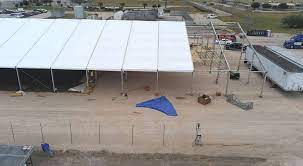Government Progress On Construction Of Rawalpindi Ring Road

Introduction:
The Islamabad-Rawalpindi Metropolitan Area is essential to Pakistan’s economy. The twin cities of Islamabad and Rawalpindi make up the majority of the region and are the country’s third-largest inhabited metropolitan area. Rawalpindi is a critical logistical and transportation hub for Pakistan’s northwestern region. Road and metro transport systems connect the two cities, and their economies are intertwined. Read to know about the construction of the Rawalpindi ring road.
The National Highway N-5 is among the country’s most essential national transportation arteries. The 1,819-kilometer route connects Torkham, Peshawar, Islamabad, Lahore, Karachi, and other critical economic cities. This corridor is home to 96 percent of export earnings and 65 percent of inland freight flows. The portion of N-5 that passes via Rawalpindi’s central neighborhoods is one of the major bottlenecks.
The construction of the Rawalpindi Ring Road will aid in the alleviation of the N-5 bottleneck. It will assist relieve congestion in Rawalpindi’s central regions, freeing up space and reducing commute time for non-motorized traffic, public transit, and commuting vehicles. It will also be helpful in cutting down on fuel usage, vehicle noise, and pollution in cities. It would also help Rawalpindi grow in a planned manner towards the southwestern edge. The position of city as a national transportation and logistics hub will be enhanced by separating strategic movements toward the city’s southwest area from regular traffic. Furthermore, the northeastern half of the city and Islamabad will have enough room for livability, job generation, and other commercial or industry growth.
The impact of Rawalpindi Ring Road on Kingdom Valley Islamabad.
Environmental Category:
The proposed project will be subject to the Bank’s Environmental and Social Framework (ESF). The Environment and Social Standards (ESSs) will be used for screening, categorization, and due diligence in various subproject contexts. According to the Bank’s ESF, the project is considered to be Category A, given the nature of the work progress and relevant environmental and social settings. Instruments such as the Environmental and Social Impact Assessment (ESIA) and the Environmental and Social Management Plan (ESMP), the Resettlement Policy Framework (RPF), and the Resettlement Action Plan (RAP) should be ready in comparison with other project documentation as a component of the ESF’s initial planning.
Execution of the Project:
The planned project will run from January 1, 2019, to December 31, 2023. The Punjab Government’s Communications and Works (C&W) Department will carry out the project. All procurement for the project will be done in compliance with the Bank’s Procurement Policy, which was published in January 2016, as well as the Interim Operational Directive on Procurement Instructions for Recipients, which was published in June 2, 2016.
Know the benefits of Ring Road for Rudn Enclave.
Inauguration:
This is the most crucial development that all landowners and investors are looking forward to. The inauguration was supposed to occur in the fourth quarter of 2020, but it has been postponed for a few months due to department delays and pandemic concerns.
Because the necessary approvals and NOCs from various departments had to be obtained, the intended land had to be bought from landowners before the contract was officially awarded. The entire process took a few months, even before the official inauguration.
Our Prime Minister Imran Khan and Punjab Chief Minister Usman Buzdar jointly launched the project after selecting the contractor.
Government’s Progress on the Project:
During the CDWP meeting, the Planning Commission deputy chairman presented critical issues and recommended their resolution. He informed the CDWP that the communications ministry needed to handle the problem of axle load compliance right away. He has indicated that the problem of merging RRR and M-2 traffic is crucial.
The CDWP had concluded that a committee chaired by the additional secretary, ministry of communication systems, and comprised of member (planning), NHA, Rawalpindi Commissioner/project director (PD), RRR, and member, engineering, Capital Development Authority (CDA), would finalize a detailed plan for the merger of the RRR traffic with the M-2 and its other flow towards other NHA and CDA-controlled motorways and highways. The strategy will be presented to the Ministry of Planning, Development, and Special Initiatives (MoPD&SI) for review and insertion into the ECNEC summary. The CDWP concluded that the communications ministry and the National Highway Administration should take the necessary steps to adopt axle load limits.
The communications ministry’s deputy chief of the National Transport Research Centre (NTRC) stated that no overloaded trucks travel on highways. On the other hand, overloaded trucks are punished for using national roadways. Punjab, he claimed, lacks legislation to regulate axle loads. As a result, overloaded trucks cannot be prohibited from using the RRR. He claimed it would be tough to stop them at the Thallian intersection.
Apart from that if you want to know about Karachi’s Traffic Enforcement System then visit our Real Estate category.




